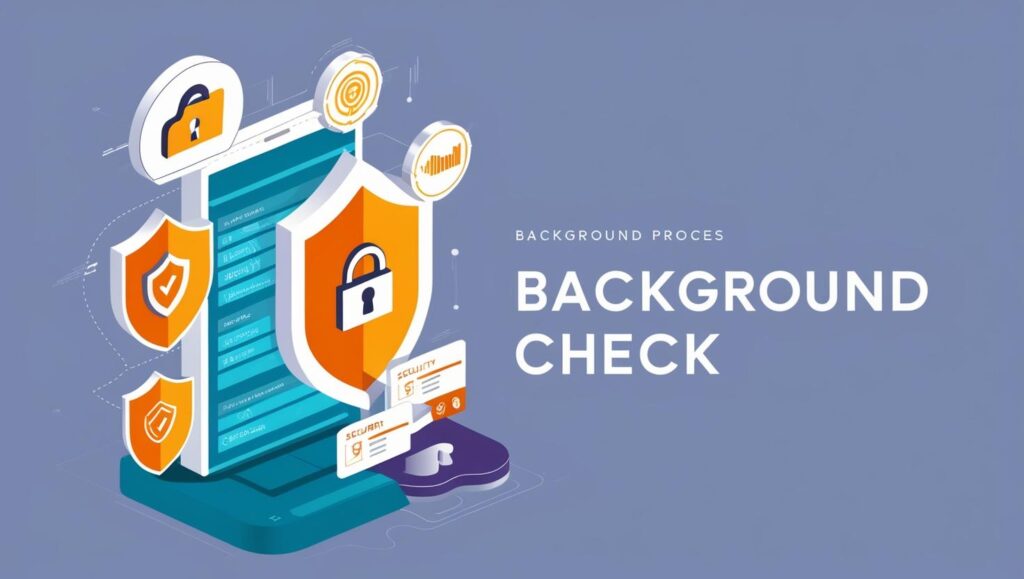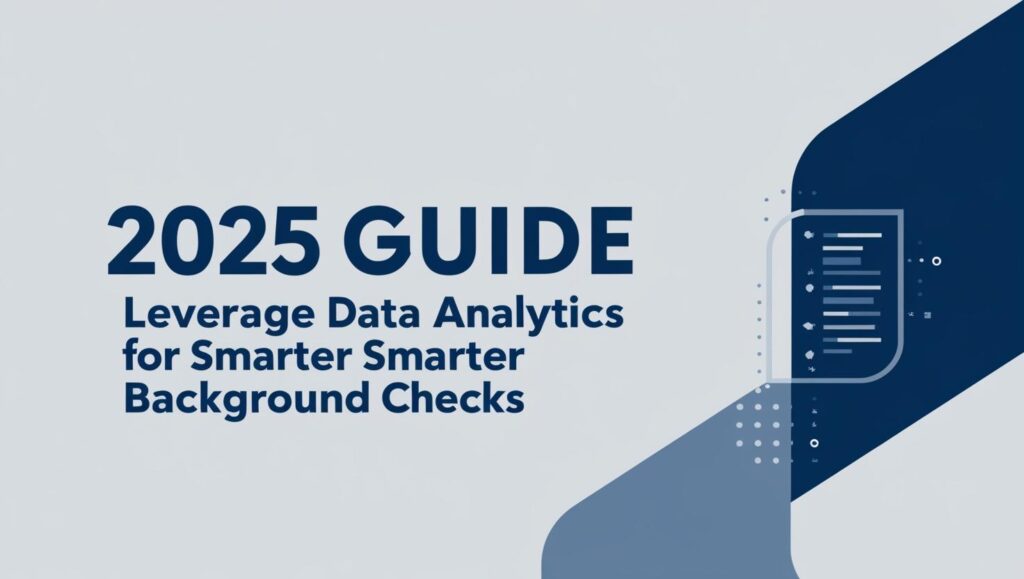For hiring, the critical decision-making at 2025 could not have been made more crucially than now. Complexity in pools of talent and regulation requirements push for efficiency: all these made data analytics center-stage in the verification of a background. You’re an HR, hiring manager, data analyst, or a compliance officer who’s looking at hiring as that which can turn the process from smart, quick, and effective to an even much smarter, swifter, and reliable system through data-driven tools.
Why Data Analytics Matters in Background Checks

Data analytics is a process which involves analyzing huge amounts of data to provide actionable insights. If this process is applied in performing background checks, it improves efficiency and accuracy, while also safeguarding against violation of legal and other regulatory standards while mitigating risks with regard to raised red flags and patterns.
By integrating data analytics into your background verification process, you’re not just checking boxes—you’re building a more robust and informed hiring strategy.
Key Applications of Data Analytics in Background Checks
Let’s explore the core ways data analytics is reshaping background checks:
1. Real-Time Data Insights
Modern data analytics tools provide real-time access to crucial candidate information, including:
Criminal records
Employment history
Education credentials
Social media activities
With real-time analytics, you can evaluate candidates faster without sacrificing accuracy in your hiring pipeline.
2. Predictive Analytics for Risk Assessment
Predictive analytics utilizes historical data and machine learning to predict potential risks. For instance:
Behavioral patterns: Assess the likelihood of a candidate being a good cultural fit or retained long-term.
Financial responsibility: Analyze financial records for fiduciary accountability roles.
Compliance risks: Identify discrepancies in work history or legal issues.
Predictive analytics will allow you to hire proactively to reduce long-term risks.
3. Automation and Machine Learning
Data analytics automates repetitive and time-consuming tasks like:
Parsing and verification of credentials
Cross reference of data from multiple sources
Detailed verification report generation
Machine learning algorithms get better with time and offer accuracy and adaptability to new data.
4. Better Compliance Monitoring
Compliance with global and local regulations like GDPR, FCRA, and EEOC is a must. Data analytics ensures:
Automated tracking of compliance requirements
Transparency in audit trails to the regulatory scrutiny
Alerts on non-compliance issues before they become an issue
This will minimize the legal challenge and ensure candidate and stakeholder trust.
5. Social Media and Behavioral Analysis
It means that social media analysis powered by data analytics could provide a far deeper insight into the personality and values of a candidate and reveal hidden red flags. However, this has to be done ethically and within legal bounds. Analytics tools include:
Public posts or activities which can impact your organization
Highlight good company cultural alignment
Flag potential controversy and inappropriate content without bias
Steps to Implement Data Analytics for Smarter Background Checks
Are you ready to add data analytics to your hiring process? Here’s where to start:
1. Determine Your Requirements
Consider what is needed for your industry and your organization. For example:
* HR might need cultural fit and verification of skills.
* Compliance will want regulatory compliance.
* Data analysts will be looking for seamless integration and better reporting.
2. Pick the Right Tools
Invest in the proper tools to achieve your goals. Some of them are:
Platforms that use AI: To auto-run predictive analytics.
Dashboards: For the real-time observation and insights gained.
Integration capabilities: To ensure that HR systems integrate smoothly with others.
3. Prepare Your Team
Prepare your team for reading and taking action on the insights from the data. There are training sessions, workshops, and collaboration with experts in data science that can close knowledge gaps.
4. Create Ethical Principles
Create policies on how to use data analytics ethically and by the book, especially in relation to social media or personal information. Best practice is in place to protect rights of candidates and transparency.
5. Continuous Evaluation and Adjustment
Monitor and review regularly the performance of your analytics tools and processes. Improve through feedback and new developments in regard to technology.
Advantages of Using Data Analytics for Background Checks
The use of data analytics in your background verification will:
Accelerate hiring: Automate processes and gain real-time insights.
Improve decision-making: Hire based on data-driven evidence.
Reduce bias: Rely on objective data instead of subjective impressions.
Enhance candidate experience: A faster, more transparent process leaves a positive impression.
Challenges and How to Overcome Them
Implementing data analytics can come with challenges, such as:
Data Privacy Concerns: Maintaining strong privacy laws ensures that sensitive information is not leaked.
High Initial Investment: ROI and scalability are considered in the long run.
Resistance to Change: Educate stakeholders about the benefits of data-driven approaches for buy-in.
Future Trends to Watch
In the future, the advances in data analytics will further enhance background checks as follows:
AI-Powered Personalization: Tailoring verification processes according to roles based on specific requirements.
Blockchain Integration: Immutable records for secure and transparent data sharing.
Global Databases: Increased access to international verification resources.
Conclusion
In 2025, data analytics is no longer a tool but a strategic asset for smarter background checks. Whether you are an HR professional ensuring the right cultural fit, a compliance officer navigating regulations, or a data analyst driving efficiency, leveraging analytics can transform your hiring process.
